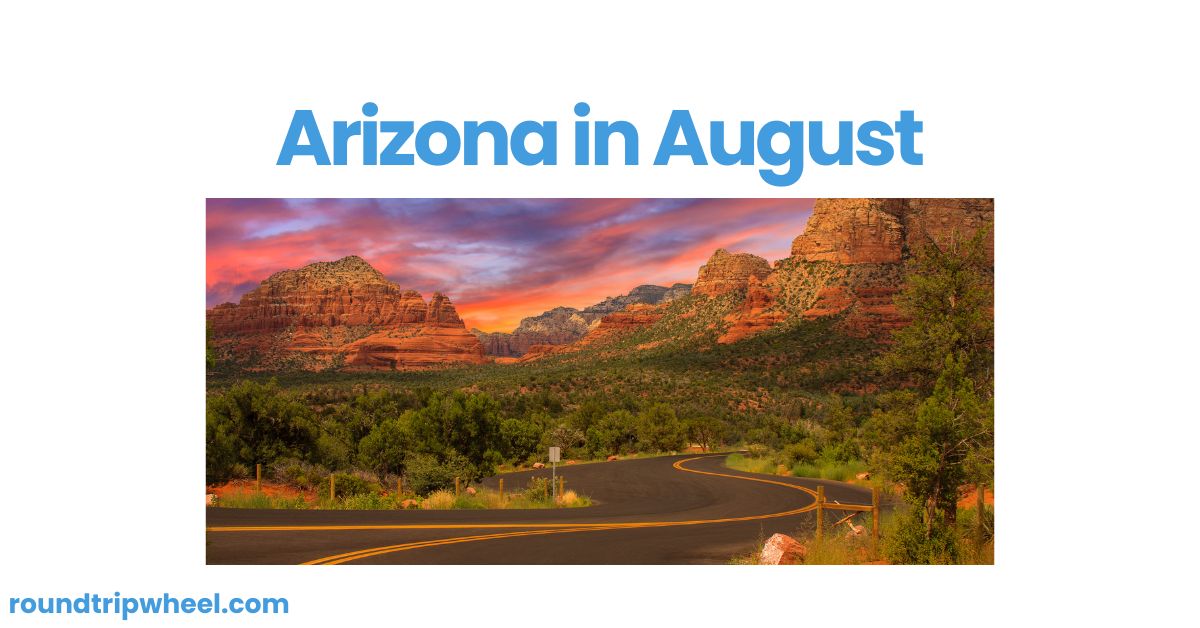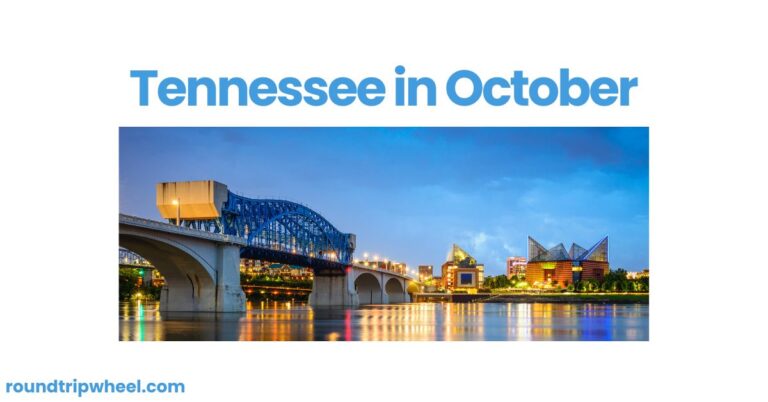Arizona in August: Embracing the Heat and Beauty of the Grand Canyon State

As summer reaches its peak, Arizona stands as a testament to nature’s extremes. August in the Grand Canyon State offers a unique blend of scorching desert heat and cool mountain retreats, creating an environment that both challenges and captivates visitors. From the iconic red rocks of Sedona to the bustling streets of Phoenix, Arizona in August presents a landscape of diverse experiences for those willing to brave the heat.
The Desert Heat: Understanding Arizona’s August Climate
August in Arizona is synonymous with high temperatures, particularly in the southern and central regions. Cities like Phoenix and Tucson often see daily highs soaring well above 100°F (38°C), with some days pushing towards 110°F (43°C) or higher. This intense heat is a defining characteristic of the Arizona summer, shaping both the natural environment and the rhythm of daily life for residents and visitors alike.
However, it’s important to note that Arizona’s climate varies significantly with elevation. While the low desert areas experience extreme heat, higher elevation destinations like Flagstaff and the Grand Canyon’s North Rim offer more moderate temperatures, often 15-20 degrees cooler than their lower-lying counterparts. This temperature variation creates a unique opportunity for travelers to experience diverse climates within a single state.
The concept of “dry heat” is often mentioned when discussing Arizona’s summer climate. While the lack of humidity can make high temperatures more bearable compared to humid climates, it’s crucial not to underestimate the intensity of the desert sun. Dehydration and heat-related illnesses are serious concerns, making proper hydration and sun protection essential for anyone venturing outdoors.
Adapting to the Heat: Outdoor Activities and Precautions
Despite the challenging temperatures, August in Arizona doesn’t mean outdoor activities come to a complete halt. Many residents and visitors alike find ways to enjoy the state’s natural beauty while respecting the power of the sun. Early morning and late evening become prime times for hiking, cycling, and other outdoor pursuits, allowing people to avoid the most intense midday heat.
Popular hiking destinations like Sedona’s red rock trails or the paths around the Grand Canyon require careful planning in August. Starting hikes before sunrise, carrying ample water (more than you think you’ll need), wearing appropriate sun protection, and being prepared to turn back if conditions become too challenging are all essential practices. Many experienced hikers in Arizona follow the “10 by 10” rule – be off the trail by 10 AM or when the temperature reaches 100°F, whichever comes first.
Water activities become particularly appealing during this hot month. Lakes and rivers throughout the state, such as Lake Powell, Lake Havasu, and the Colorado River, offer refreshing escapes. Tubing down the Salt River near Phoenix is a popular summer pastime, allowing people to cool off while enjoying the desert scenery.
For those seeking more extreme adventures, white water rafting trips through the Grand Canyon continue to operate in August. These multi-day journeys offer a unique perspective on the canyon’s geology and provide relief from the heat with the cool waters of the Colorado River. However, it’s important to note that these trips require advance planning and booking, as they’re highly sought after, especially during the summer months.
Urban Oases: How Cities Cope with August Heat
Arizona’s major cities have adapted to the intense summer heat, creating environments that allow life to flourish even in the hottest months. Phoenix, often called the Valley of the Sun, exemplifies this adaptation. The city’s infrastructure and culture have evolved to embrace indoor-outdoor living, with air-conditioned spaces seamlessly blending with shaded outdoor areas.
Resort pools become central gathering places in August, with many Phoenix and Scottsdale resorts offering expansive pool complexes complete with lazy rivers, water slides, and poolside amenities. These aquatic playgrounds provide a refreshing escape for both tourists and locals looking to beat the heat.
Museums and cultural attractions offer cool retreats filled with art, history, and science. The Heard Museum in Phoenix, showcasing American Indian art and cultural artifacts, and the Arizona-Sonora Desert Museum near Tucson, which combines a zoo, botanical garden, and natural history museum, are excellent options for indoor exploration on hot August days.
Dining out in August often means embracing patio culture, with restaurants offering misted outdoor seating areas that make al fresco dining comfortable even in high temperatures. Many establishments adjust their hours during the summer months, opening later in the day and extending service into the cooler evening hours.
The Monsoon Season: Nature’s Drama Unfolds
August marks the heart of Arizona’s monsoon season, bringing a dramatic shift to the typically arid climate. Afternoon thunderstorms become a regular occurrence, particularly in the higher elevations and mountainous regions. These storms, while often brief, can be intense, featuring spectacular lightning displays, strong winds, and sudden downpours.
The monsoon rains transform the landscape, bringing a surge of life to the desert. Dry washes can quickly become raging torrents, and normally barren hillsides burst into bloom. This period offers photographers and nature enthusiasts a unique opportunity to witness the desert’s rebirth, with vibrant wildflowers and increased wildlife activity.
However, the monsoon season also brings its own set of challenges and dangers. Flash floods are a serious concern, particularly in slot canyons and low-lying areas. Visitors need to be aware of weather forecasts and avoid areas prone to flooding during storms. The “stupid motorist law” in Arizona serves as a reminder of the dangers of attempting to cross flooded roadways, holding drivers liable for rescue costs if they ignore barricades and become stranded.
Despite these risks, the monsoon season adds an element of excitement and unpredictability to August in Arizona. The afternoon build-up of clouds can provide welcome relief from the sun, and the post-storm sunsets are often breathtakingly beautiful, painting the sky in vibrant hues of pink, orange, and purple.
Escaping the Heat: High Country Retreats
For those seeking respite from the intense desert heat, Arizona’s high country offers a welcome escape. The town of Flagstaff, situated at an elevation of around 7,000 feet, provides a cool mountain retreat with average August highs in the low 80s°F (around 28°C). This charming college town serves as a gateway to outdoor adventures, including hiking in the surrounding Coconino National Forest and stargazing at the Lowell Observatory.
The White Mountains in eastern Arizona offer another high-elevation escape, with towns like Pinetop-Lakeside and Show Low providing access to forests, lakes, and cooler temperatures. These areas are popular for camping, fishing, and hiking, offering a stark contrast to the desert landscapes found elsewhere in the state.
Sedona, while not as high in elevation as Flagstaff, still offers some relief from the extreme heat of lower deserts. Its iconic red rock formations create a stunning backdrop for outdoor activities, with early morning hikes and evening strolls along Oak Creek providing comfortable ways to explore the area’s natural beauty.
The Grand Canyon: A World Wonder in August
No discussion of Arizona in August would be complete without mentioning the Grand Canyon. This natural wonder attracts visitors year-round, but August presents both challenges and unique opportunities for those exploring its vast expanse.
The South Rim, being more accessible and lower in elevation than the North Rim, experiences hotter temperatures, with daytime highs often reaching the 90s°F (mid-30s°C). However, the canyon’s immense depth creates its own microclimate, with temperatures at the bottom often 20-30 degrees warmer than the rim. This temperature inversion makes rim-to-river hikes particularly challenging in August, requiring careful planning and an early start to avoid the most intense midday heat.
The North Rim, open seasonally from mid-May to mid-October, offers a cooler alternative with its higher elevation (around 8,000 feet). August temperatures here are typically more moderate, making it an attractive option for those looking to explore the canyon without the extreme heat of the South Rim.
Regardless of which part of the canyon you visit, August offers some distinct advantages. The longer daylight hours provide extended opportunities for sightseeing and photography. The dramatic monsoon storms, when viewed safely from the rim, create spectacular scenes as clouds and light play across the canyon’s vast expanse.
Wildlife viewing can be particularly rewarding in August, as animals are often more active in the cooler morning and evening hours. Mule deer, elk, and various bird species are commonly sighted along the rim trails. However, it’s important to maintain a safe distance and never feed wild animals.
Cultural Experiences and Events
Despite the heat, August in Arizona is filled with cultural events and experiences that showcase the state’s rich heritage and vibrant arts scene. Many communities host evening concerts and outdoor movie screenings, taking advantage of the cooler nighttime temperatures.
In Phoenix, First Fridays continue throughout the summer, with art galleries and cultural venues staying open late on the first Friday of each month. While the outdoor portions of these events may be scaled back due to the heat, the indoor exhibitions and air-conditioned spaces provide a perfect environment for exploring the local art scene.
Native American cultural events and pow wows often take place during the summer months, offering visitors a chance to experience traditional dances, music, and crafts. These events provide valuable insights into the rich cultural heritage of Arizona’s indigenous peoples.
The town of Prescott, with its milder summer climate, hosts various events in August, including art fairs and outdoor concerts in the historic courthouse square. These events blend small-town charm with cultural enrichment, offering a pleasant alternative to the larger urban centers.
Culinary Adventures in the Heat
August in Arizona also presents unique culinary opportunities. The summer heat brings an abundance of locally grown produce, with farmer’s markets throughout the state showcasing a variety of fresh fruits and vegetables. Melons, particularly prickly pear fruit, reach their peak sweetness during this time.
Many restaurants embrace the season with special summer menus featuring light, refreshing dishes and creative use of local ingredients. Prickly pear margaritas become a popular choice, offering a distinctly Arizonan twist on the classic cocktail.
Ice cream shops and frozen treat vendors see booming business in August, with locals and tourists alike seeking sweet relief from the heat. Unique flavors incorporating regional ingredients like mesquite, chili, and various cacti fruits offer a taste of Arizona’s culinary creativity.
Conclusion: Embracing Arizona’s August Intensity
August in Arizona is a month of extremes, challenging visitors with intense heat while rewarding them with stunning natural beauty, cultural richness, and unique experiences. From the scorching deserts to the cool mountain retreats, the state offers a diverse range of environments and activities for those willing to adapt to its summer rhythm.
While the heat can be daunting, proper preparation and respect for the environment allow travelers to safely explore all that Arizona has to offer in August. Whether you’re marveling at a Grand Canyon sunset, cooling off in a resort pool, or experiencing the drama of a monsoon storm, August in Arizona promises memories that will last long after the temperature cools.
For those seeking an adventure that tests their resilience and rewards their spirit, Arizona in August stands ready to provide an unforgettable journey through one of America’s most captivating landscapes.

About Author
Hey there, fellow explorers! I’m Mark Rodriguez, a big fan of adventures and always hungry for more. Packed with stories and a trusty camera, I’m on a mission to explore cool places around the world.
I love diving into new cultures and landscapes. As a travel writer, my goal is to get you excited about stepping out of your comfort zone, trying new things, and discovering the awesome magic our world has.
Check out my blog for cool stories, travel ideas, and helpful tips to plan your own amazing getaway!





